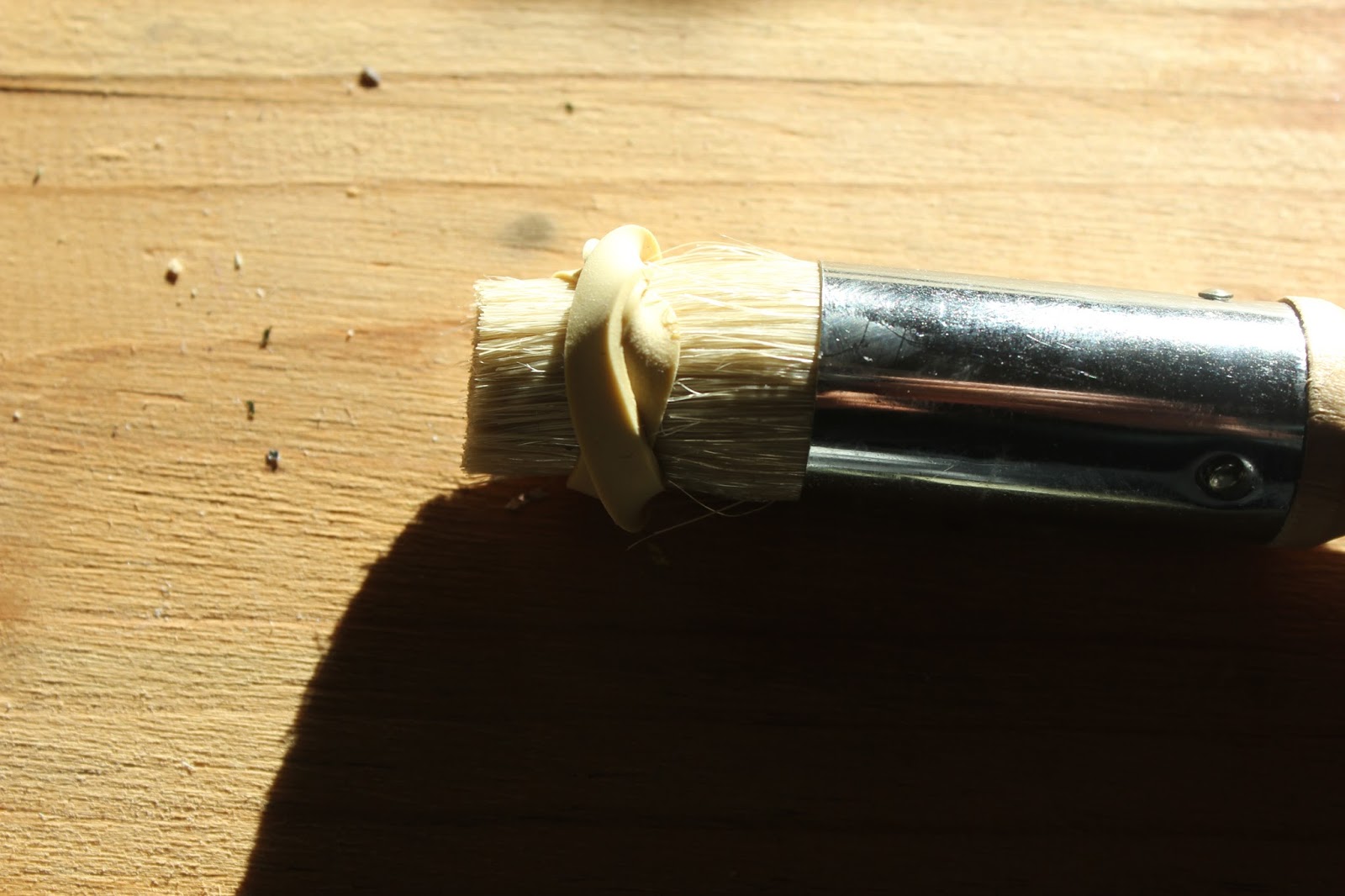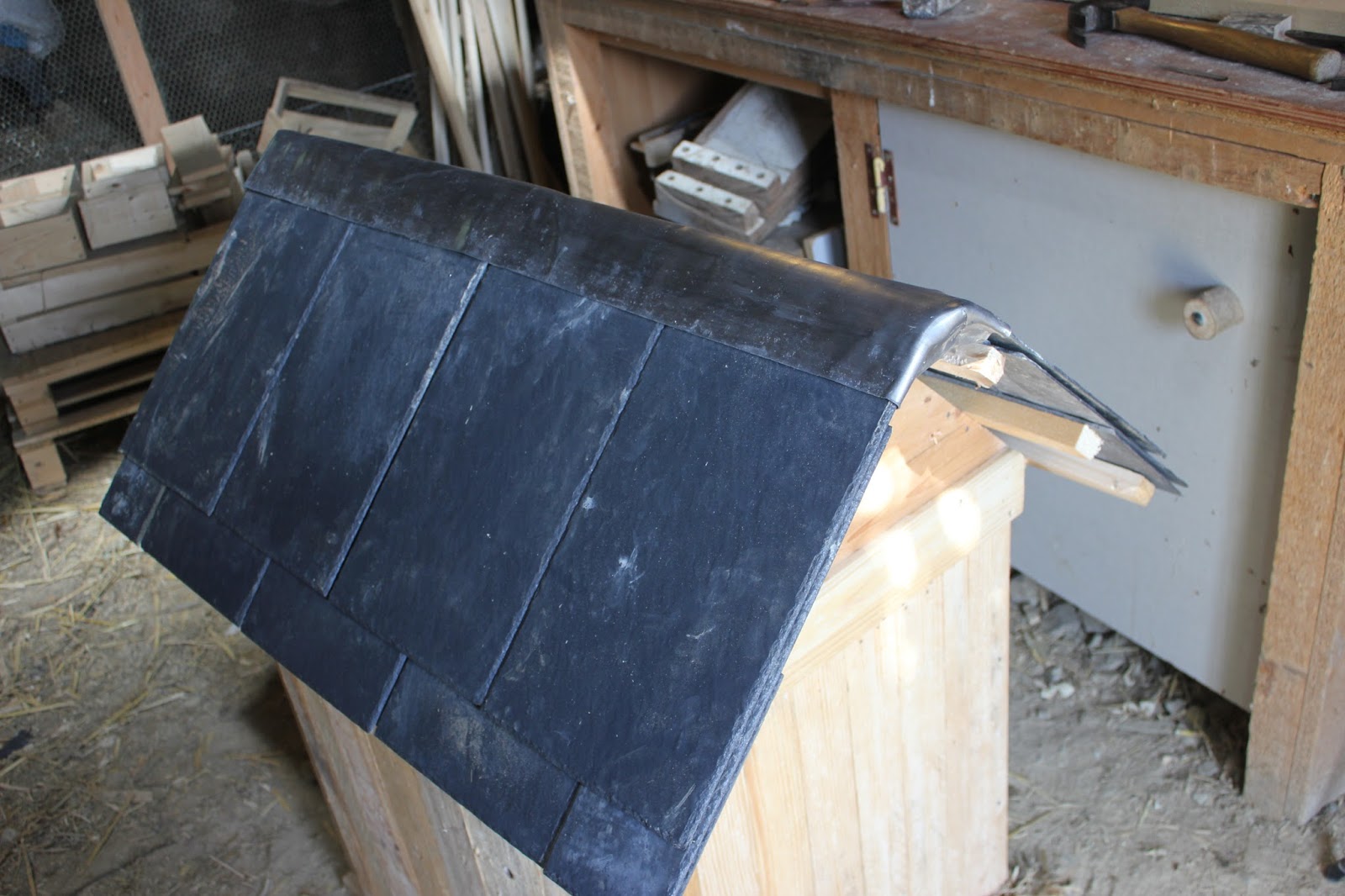For the past few years we have been making our own ecological greetings cards for Christmas. This not only saves resources and money but it creates a personal gift, which hopefully shows family, friends and neighbours, we took time to create something just for them. From past experience we know that people keep these cards, which being of wood are less ephemeral than the paper varieties and are meant to be hung up and used as small pictures or decorations. By using this method, which combines stencil, hand-painted additions, collage and découpage you can easily produce multiple cards but each design will be individual and thus unique.
As we have rare breed organic poultry and also many beautiful cross-bred chickens, Sue took her inspiration for this year's card 'Chic Chick' from one of the flock but the principle would be the same for whatever you decided to use for your main image.
As we have rare breed organic poultry and also many beautiful cross-bred chickens, Sue took her inspiration for this year's card 'Chic Chick' from one of the flock but the principle would be the same for whatever you decided to use for your main image.
This is Snowy, suitably named for this time of year, she is a Columbian Cochin bantam and as you can see from above, she has already been used as a model for another of our projects. (This was a wheat-filled hot water bottle alternative, Sue designed, made and named the Snuggly Snowy. You can find how to make it by following the link.)
 The wood used in these and the other previous year's card designs, which I will share at the end of this blog, is from fruit crates. These come in various woods and qualities but what we are looking for is pine rather than poplar. This latter tends to be thinner and may have already begun to warp in transit. We get our crates from our local organic shop and we sort and store the quality pine for all kinds of wood working projects. You can identify them by the fact that the wood actually feels better quality and you will also see a reddish tinge to the grain.
The wood used in these and the other previous year's card designs, which I will share at the end of this blog, is from fruit crates. These come in various woods and qualities but what we are looking for is pine rather than poplar. This latter tends to be thinner and may have already begun to warp in transit. We get our crates from our local organic shop and we sort and store the quality pine for all kinds of wood working projects. You can identify them by the fact that the wood actually feels better quality and you will also see a reddish tinge to the grain.
The paints Sue uses are, for the main colour wash an acrylic water-based varnish. This she tints with a natural earth pigment (if you have never used these before and would like to find out more about them and how to mix them, then we have a post on just that topic here). For the white of the hen's body she used an ecological paint bought from our local natural building store. The rest of the colours were from her watercolour paint box. I'll now leave her to fill in the rest.
You can cut a stencil for the main design from any sort of fairly strong card but if you are going to use it repeatedly, as here, then it is well worth investing in a sheet of oiled stencil paper. I bought a couple of large sheets years ago and when I have a small item to make as a stencil, I usually end up just trimming a corner off one of my old designs. If you were just to use a plain card to make a stencil and to apply it many times and I had nearly 40 cards to make here, you could end up with at best, a badly defined outline and at worse, a soggy mess!
The rest of the collage items are feathers from a friend's turkey and guinea fowl, bits of decoration, découpage and ribbon, all picked up from a thrift shop and some good old-fashioned jute string.
Finally that inspiration, without which we can never get quite the right feel for any message or expression of sentiment, wonderful old blue black ink and thick writing paper. (The black ink bottle is just the vessel to enable us to dip the fountain pen for refilling)
A tri-square (or CD case) and a cutting block.
A saw to cut the fine-grained fruit crate wood,
I find the best options are either a Japanese draw saw (above left) or a tenon saw.
Fine sandpaper to clear up any burrs.
A glue gun if you intend to add collage and découpage elements to the card
Materials
 The wood used in these and the other previous year's card designs, which I will share at the end of this blog, is from fruit crates. These come in various woods and qualities but what we are looking for is pine rather than poplar. This latter tends to be thinner and may have already begun to warp in transit. We get our crates from our local organic shop and we sort and store the quality pine for all kinds of wood working projects. You can identify them by the fact that the wood actually feels better quality and you will also see a reddish tinge to the grain.
The wood used in these and the other previous year's card designs, which I will share at the end of this blog, is from fruit crates. These come in various woods and qualities but what we are looking for is pine rather than poplar. This latter tends to be thinner and may have already begun to warp in transit. We get our crates from our local organic shop and we sort and store the quality pine for all kinds of wood working projects. You can identify them by the fact that the wood actually feels better quality and you will also see a reddish tinge to the grain.The paints Sue uses are, for the main colour wash an acrylic water-based varnish. This she tints with a natural earth pigment (if you have never used these before and would like to find out more about them and how to mix them, then we have a post on just that topic here). For the white of the hen's body she used an ecological paint bought from our local natural building store. The rest of the colours were from her watercolour paint box. I'll now leave her to fill in the rest.
You can cut a stencil for the main design from any sort of fairly strong card but if you are going to use it repeatedly, as here, then it is well worth investing in a sheet of oiled stencil paper. I bought a couple of large sheets years ago and when I have a small item to make as a stencil, I usually end up just trimming a corner off one of my old designs. If you were just to use a plain card to make a stencil and to apply it many times and I had nearly 40 cards to make here, you could end up with at best, a badly defined outline and at worse, a soggy mess!
The rest of the collage items are feathers from a friend's turkey and guinea fowl, bits of decoration, découpage and ribbon, all picked up from a thrift shop and some good old-fashioned jute string.
Finally that inspiration, without which we can never get quite the right feel for any message or expression of sentiment, wonderful old blue black ink and thick writing paper. (The black ink bottle is just the vessel to enable us to dip the fountain pen for refilling)
Tools
A tri-square (or CD case) and a cutting block.
A saw to cut the fine-grained fruit crate wood,
I find the best options are either a Japanese draw saw (above left) or a tenon saw.
Fine sandpaper to clear up any burrs.
A glue gun if you intend to add collage and découpage elements to the card
A craft knife for cutting stencils.
For the rest, you will need some PVA glue or similar to attach the paper on which to write your greeting, scissors and most importantly one extra item, which in a sense is a tool or rather a useful contrivance if you are intending to use an image such as a chicken, taken from life - something large and juicy they love to eat.
Creating a strong repeatable image
If you are worried about getting the correct proportion and a nice crisp outline, then why not follow in the footsteps of the Impressionists and Pre-Raphaelites and use photography. Nowadays with the computer, we can reinvent the 18th and 19th century silhouette portrait tracing-machine of candles, screen and grid.
Once you have your design you can then photograph it and reduce it down on the screen but for a naive painting, you can just get the gist of the general outline in your mind and thus onto paper. From this paper template you will now be able to cut your stencil.
As you will deduce from the above photograph, I took this in retrospect, after some 40ish uses of this same stencil. However, as you can see I am only just beginning to lose a little of the definition of my original cut.
Creating and using a stencil brush
The brush I use for stencilling was probably intended for use in stippling effects on a wall, as this is a limited usage, many end up in thrift shops and can easily be converted for stencilling. If you can't find these then an ordinary paint brush used for painting and decorating, given a slight trim, can also be used.
All that is needed to obtain a crisp stencil, is to wrap a good strong elastic band (this one from a bunch of watercress) around the brush.
When using the above to create a stencil, you will need to work the paint well into the brush and at the same time get rid of any excess moisture which could spoil the outline of the stencil. I have always found that using the paint tin lid or china saucer and tapping the brush into the paint and then just onto the lid/saucer several times before applying the stencil works really well.
Some tips for painting on fruit crate wood
I like to use a broad brush and work with the grain of the wood. I paint one side and the edges and then put the pieces aside to dry, sometimes using the top rail of the wood cooker to speed this up, before painting the other side.

However, because this is thin open-grained wood you can occasionally experience warping, so with the varnish still 'tacky', pile up any problematic pieces and put a weight on them. After a few minutes remove the weight, gently prise apart any pieces that have stuck together and then leave in the air to completely dry. If any slight warping occurs, repeat the process.
Creating a unique piece
You are now ready to stencil your image onto the wood,
decorate with additional touches of paint,
thread through your picture 'wire' of string and ribbon,
add your collage and découpage,

and append your personal greeting.
Now if you'd like to sit back and watch some films of our previous designs.
If you've enjoyed this article and found it useful please feel free to share it or to comment and/or make observations. All the very best and until next time,
Andy
© Andy Colley 2014
© Andy Colley 2014

























































